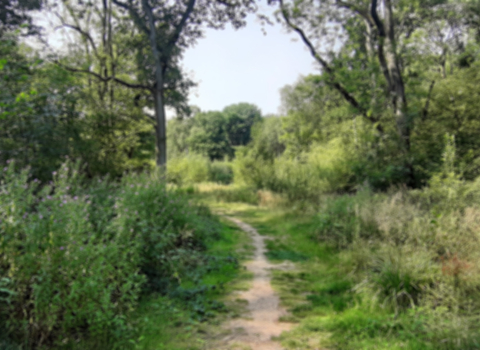When people think of a woodland, many will think of tall majestic trees that block out sunlight to create a dark and mystical atmosphere. In reality, the healthiest woodlands are much more diverse and include gaps in the tree canopy where light can burst through to the woodland floor. Where woodlands don’t have these gaps, the wildlife that lives there is much more limited and new trees struggle to get a foothold.
Bubbenhall Wood is an important pocket of ancient woodland that sits within the Dunsmore Living Landscape, just outside of Bubbenhall village. Once part of a much larger woodland it remains a refuge for threatened woodland wildlife. Recent years have seen a large amount of work focussed on relinking the woodland up to neighbouring Ryton Wood, Ryton Pools Country Park and Wappenbury Wood through hedgerows, meadow management and tree planting. Unfortunately, the woodland itself, which was managed for timber up until around 50 years ago, had slowly been losing its benefit for wildlife as the canopy closed and the structure became more even. Light-loving wildlife was beginning to be forced out of the woodland as suitable habitat became ever scarcer.
Since 2016, Warwickshire Wildlife Trust has been working to expand the canopy gaps in the woodland, and to reset the clock for wildlife. This work occurred in the woodland’s existing network of glades and rides. A 'glade' is a space in a woodland without any trees. It is usually filled with grasses and wildflowers, and can be thought of as a tiny meadow within a woodland. A 'ride' is a track that has been cut into a woodland for access, but when managed properly it can act as a long and thin glade. Being natural habitats, both require some form of management to stay open, as trees and plants will grow over time and eventually close the gap completely.
Frances Wilmot
At Bubbenhall, a portion of an individual glade is cleared every year, typically a quarter of the entire glade. Varying our management means we are not affecting all the wildlife habitat in one go and there is always a refuge for wildlife. It also means that different parts of the glade will be at different ages to provide maximum diversity. When an area is cleared, it taken back to short grass, tree stumps and bare ground. This will benefit, amongst other things, cold blooded animals that need to bask in sunlight, certain insects that need to burrow into bare ground, and plant seeds that need warmth to germinate. As this area grows over the next few years, it will fill up with wildflowers that benefit pollinators and their predators, and eventually turn into bushy “scrub” that acts as cover and places to nest and hunt for animals.
Rides are managed slightly differently due to their shape. Here we cut a central portion every year to maintain a constant short area, and cut the outside edges over a longer period (typically 2-3 years). The reason for this is that the transition area from a woodland into an open area is a wildlife hotspot, where animals can feed, search for mates and warm up, but are still able to retreat back into the woodland cover if needed. The structure of this edge is therefore very important and we further maximise this benefit by cutting sections of trees on this woodland edge over a period of 10-12 years to create smaller trees that provide a long sloping edge. This way we can maximise the amount of this extremely important edge habitat, and provide a varied and diverse structure for wildlife.





